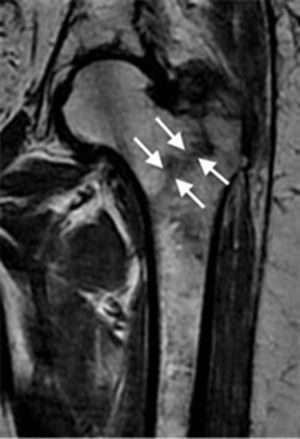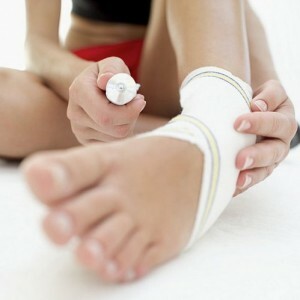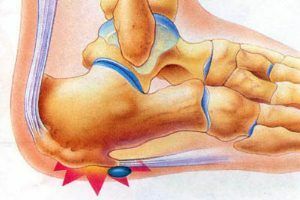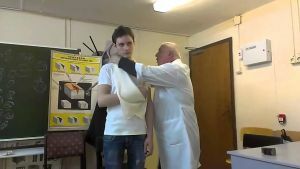 The first bandage is considered to be a "kerchief", it serves as an independent method of immobilization.
The first bandage is considered to be a "kerchief", it serves as an independent method of immobilization.
It is used in cases of first aid, and for fixing the arm and shoulder joint, to ensure rest at fractures and bruises.
In addition, there are situations in which it is also necessary to apply a bandage dressing:
- rehabilitation;
- unloading of the shoulder and shoulder joint;
- injuries;
- sprains;
- fracture of bones;
- fracture of the upper limbs;
- damage to ligaments of the shoulder joints.
The kerchief is most often used, providing first aid, in those situations in which there is a need for temporary immobilization before the arrival of medical personnel.
It can be applied either directly to the body or over the protective dressing, it can be folded and unfolded.
Its main advantage is its versatility: it can be applied to any part of the body. It's easy to impose it, and quickly.
Contents of the article
- What is the bandage used for?
- What kind of first aid bandage is
- General rules for using a bandage
- Applying a bandage in different situations
- Fixing the head
- Feet and brush
- Knee joint
- Applying a bandage to the hand
- Correctly laying a bondage on the chin
- Applying a bandage to the thigh
- Locking the arm
- Pros and cons of the scarf
What is the bandage used for?
Basically, the bandage dressing is used in cases when it is necessary to fix a bandage or in other cases when the wound needs to be processed and insulated.
This device is also used when it is necessary to fix the damaged limbs to anything, for the usual treatment of damaged tissues.
Everyone can use it freely, it does not require medical education, it is used when a person needs to provide first aid at the scene, before the arrival of doctors.
Naturally, it should be in every medical kit.
What kind of first-aid bandage
? Classical scarf should be cotton.
Most often it is gauze. They have the shape of an isosceles triangle, and come in different sizes, starting at 80 x 80 x 113 centimeters, and more.
For today in drugstores it is possible to get medical kerchiefs of standard sizes 100 х 100 х 136 centimeters. Sometimes they use square handkerchiefs.

General rules for the use of the
dressing. You can use the dressing bandage in two different ways: open and closed.
The open method of imposing is that the dressing is superimposed like a scarf. But with the closed method, the kerchief folds in such a way that a roll turns out.
Rules for the use of dressings for different cases:
- , in case the wound is open, the dressing should be exceptionally sterile;
- never apply it to the angle of the wound, this can aggravate the situation and cause severe bleeding;
- do not tie it too tightly, but carefully fold to stop the bleeding.
Application of a bandage in different situations
A patchwork of the open type is applied:
- for the head;
- for bones and feet;
- on the heels;
- for knee ligation;
- for elbow joints;
- fractures of limbs;
- for the lower leg.
Fixing the head
The headband is made in case if a serious injury has occurred, it is necessary to apply the following: 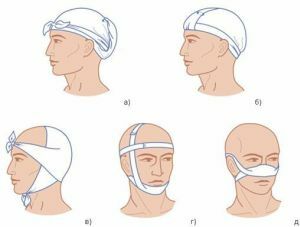
- the wound must be covered with gauze, but necessarily sterile;
- one part must be placed above the level of the nose, the second part of the bandage is placed on the occipital part of the head;
- the bandage should be taken for both ends, slightly pulling it over the base;
- two tips of bandages are taken and tied together over the base of the neck;
- the upper part of the kerchief is bent, then hides under the knot.
Feet and brush
The dressing for the wrist and foot is applied in a similar way:
- we cover the wound with sterile gauze;
- the damaged part of the body is put on the bandage;
- the upper part of the scarf is put on the inner part of the damaged part of the body;
- the two ends of the dressings are wrapped around the damaged part of the body, then tied.
Knee joint
Apply the dressing to the knee:
- we cover the wound with gauze, necessarily sterile;
- the top of the headscarf should be in the hip zone, wrapped around the waist;
- at the base of the dressing, it should be bent approximately 2 cm;
- ends need to be crossed under the thigh, a knot is tied on the thigh;
- top toss through the formed node, then pass under it.

Applying a bandage to the hand
A patchwork dressing on the arm is applied in this way:
- is still treating the wound with sterile gauze;
- on the shoulder should be the first edge of the scarf, while the second should be on the wrist;
- two ends are tied.
Correctly put bondage on the chin
Overlapping the bandage on the chin:
- sterile gauze is superimposed on the damaged part of the body;
- it is necessary to fold the gauze in the form of a kind of pocket;
- further this pocket is superimposed in the chin zone;
- ends crisscross at the top of the person.
If necessary, you can combine different types of dressings in order to achieve a better effect.
 Congenital anomaly of sacralization - what is the essence of pathology and what dangers does it have in itself for human health and life.
Congenital anomaly of sacralization - what is the essence of pathology and what dangers does it have in itself for human health and life.
Torturing a spinal hernia? Surgery to remove the intervertebral hernia microdiscectomy will help to simply and safely get rid of this disease.
Overlay bandage on the thigh
Fixation of the hip:
- we cover the wound with gauze, but sterile;
- dressing, the base of which is bent by 2 cm, folds around the thigh with a knot;
- the top of the first dressing is put into the second, also folded, then several times tying around the waist, thus, twisting the dressings, but without using knots.
Fixation of the shoulder
The application of the bandage bandage to the shoulder joint:
- we cover the wound with sterile gauze;
- dressing, which must first be deployed, is applied from above the shoulder joint;
- the top of the headscarf is inserted into the folded bandage, unfolded;
- on the back we should have a long piece of kerchief;
- after fixing the top, the ends of the second headscarf are tied in knots from all sides.
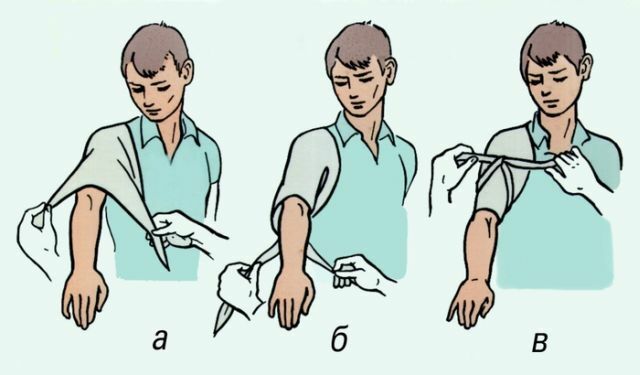
Pros and cons of the scarf
The virtue of the kerchief in its simplicity of overlap, so they are used in emergency situations.
Using the bandage bandages, you can reduce the time spent on the treatment of wounds, it will give the chance, if necessary, to have time to help more victims.
The big plus is that if it is twisted into a tourniquet, it can become a replacement for the hemostatic bundle.
However, these dressings have their drawbacks: their fixation is not strong enough. Although in an emergency, this is not so 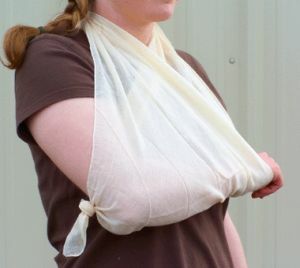 , and if you apply it correctly, the problem of weak fixation is minimized.
, and if you apply it correctly, the problem of weak fixation is minimized.
Strengthening can be made with a tubular bandage of suitable diameter.
Despite the fact that the scarf is a rather old invention, it is also effective nowadays in order to provide first aid to the victim.
Anyone can get into a situation in which there will be a need to be able to properly apply it. Therefore, even those people who have nothing to do with medicine, it is necessary to have dressing skills.
In addition, that you need to be able to apply a bandage, you need to be able and properly handle it.
The hand after dressing, if necessary, is suspended on a kerchief for fixation, which reduces the possibility of involuntary movements causing additional pain.
It should be watched, watch, so that it does not slip. In the case of sliding, from above it is necessary tightly, but not tightening, to impose one more layer of bandage, which will give an excellent therapeutic effect.
The kosynochny lock, does not have strict canons , it, if necessary, can be made even from a torn piece of shirt, it can become an ordinary piece of cloth.
In extreme circumstances, you can use a kerchief or a handkerchief folded in a triangle to help.
As a result, we can say that this is a quick and unique way to help the injured person!

